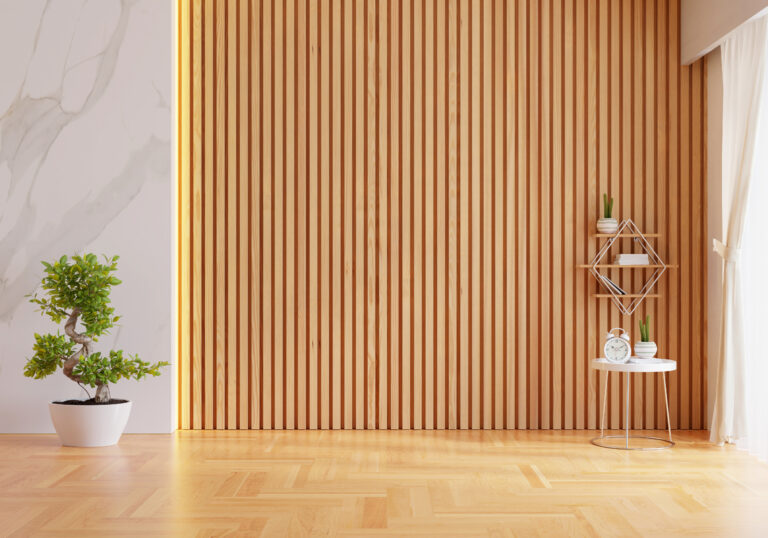A Step-by-Step Guide to Choosing the Right Plywood for Your Project

Tech Support
Are you embarking on a new project that requires the use of plywood? Choosing the right plywood is essential to ensure the success and longevity of your project. With a wide variety of options available, it can be overwhelming to decide which one is best suited for your needs.
In this step-by-step guide, we will walk you through the process of choosing the right plywood for your project. We will cover everything from understanding different types of plywood, evaluating quality, considering thickness and grade, to selecting the right adhesive and finish.
Whether you are working on a DIY home improvement project or a professional construction job, this guide will provide you with the knowledge and confidence to make an informed decision. By choosing the right plywood, you can ensure that your project is durable, reliable, and meets your expectations.
Join us as we dive into the world of plywood and equip you with the necessary information to make the right choice. Let’s get started on your journey to finding the perfect plywood for your project.
Understanding plywood grades and types
When it comes to choosing plywood, understanding the different grades and types is crucial. Plywood is graded based on its appearance, strength, and durability. The most common plywood grades are A, B, C, and D, with A being the highest quality and D being the lowest.
Grade A plywood has a smooth and uniform surface, making it ideal for projects where aesthetics are important. Grade B plywood may have slight imperfections but is still suitable for most projects. Grade C plywood has visible knots and defects, while Grade D plywood is the lowest quality and has numerous knots and defects.
In addition to grades, plywood also comes in different types such as softwood plywood, hardwood plywood, marine plywood, and structural plywood. Softwood plywood is made from softwood trees like pine or fir and is commonly used for construction purposes. Hardwood plywood, on the other hand, is made from hardwood trees like oak or birch and is often used for furniture and cabinetry.
Choosing the right plywood for indoor projects
When selecting plywood for indoor projects, it is important to consider factors such as moisture resistance, appearance, and strength. If your project is in a high-moisture area like a bathroom or kitchen, it is recommended to use moisture-resistant plywood such as marine plywood or exterior grade plywood.
For projects where appearance is important, like furniture or cabinetry, hardwood plywood is a popular choice. Hardwood plywood offers a smooth and attractive surface that can be stained or painted to match your desired aesthetic. It is also stronger and more durable than softwood plywood, making it suitable for heavy-duty applications.
Choosing the right plywood for outdoor projects
Outdoor projects require plywood that can withstand harsh weather conditions and moisture. Marine plywood and exterior grade plywood are the best options for outdoor use. Marine plywood is specifically designed to resist rot, delamination, and fungal attacks, making it perfect for boat building and other water-related applications.
Exterior grade plywood is also suitable for outdoor use and is treated with chemicals to enhance its resistance to moisture and decay. This type of plywood can withstand exposure to rain, snow, and sunlight, making it ideal for outdoor furniture, decks, and fences.
Plywood thickness and its impact on project durability
The thickness of plywood plays a crucial role in determining its strength and durability. Plywood is available in various thicknesses, ranging from 1/8 inch to 1 1/4 inches. The thicker the plywood, the stronger it will be.
For most general-purpose projects, plywood with a thickness of 3/4 inch is sufficient. This thickness provides good strength and stability without adding excessive weight. However, for projects that require additional strength, such as flooring or shelving, opting for thicker plywood can provide added durability and support.
It is important to note that the thickness of plywood also affects its flexibility. Thinner plywood tends to be more flexible and may not be suitable for projects that require rigidity or structural integrity. Consider the specific requirements of your project when choosing the appropriate plywood thickness.
Plywood finishes and treatments
Plywood finishes and treatments can enhance the appearance and durability of your project. There are several options available, including paint, stain, and varnish.
Painting plywood can provide a clean and uniform finish while protecting it from moisture and UV damage. Staining plywood allows the natural wood grain to show through while providing protection against moisture and sunlight. Varnishing plywood adds a glossy and protective layer that enhances its durability and resistance to wear and tear.
Before applying any finish, it is important to properly prepare the plywood surface by sanding it smooth and removing any dust or debris. Follow the manufacturer’s instructions for the specific finish you choose to ensure optimal results.
Factors to consider when selecting plywood for furniture projects
When selecting plywood for furniture projects, there are several factors to consider, including aesthetics, strength, and stability.
For furniture that will be visible, such as tables or cabinets, hardwood plywood is often the preferred choice. Hardwood plywood offers a beautiful and smooth surface that can be stained or painted to match your desired style. It also provides excellent strength and stability, ensuring that your furniture will withstand everyday use.
If you are building furniture that requires curved or shaped pieces, flexible plywood or bending plywood is a suitable option. This type of plywood is designed to be more pliable than traditional plywood, allowing it to bend and conform to curved surfaces without cracking or splitting.
Tips for purchasing plywood
When purchasing plywood, keep the following tips in mind to ensure you make the right choice:
1. Inspect the plywood for any visible defects, such as knots, cracks, or warping. Choose plywood with minimal imperfections for the best results.
2. Check the moisture content of the plywood. Moisture content should be below 12% to prevent warping or swelling.
3. Consider the intended use of the plywood and choose the appropriate grade, type, and thickness accordingly.
4. Compare prices from different suppliers to ensure you are getting the best value for your money.
5. Ask for recommendations from professionals or experienced DIYers who have worked with plywood before.
How to properly store and handle plywood
Properly storing and handling plywood is essential to maintain its quality and prevent damage. Follow these guidelines to ensure your plywood remains in good condition:
1. Store plywood in a dry and well-ventilated area to prevent moisture absorption and warping.
2. Keep plywood off the ground by using pallets or racks to prevent direct contact with moisture or dirt.
3. Stack plywood sheets horizontally to distribute weight evenly and prevent bending or sagging.
4. Avoid dragging or sliding plywood to prevent surface damage. Instead, use a dolly or ask for assistance when moving large sheets.
5. Avoid placing heavy objects on top of plywood sheets, as this can cause them to warp or break.
By following these storage and handling practices, you can maximize the lifespan and performance of your plywood.
Conclusion: Finding the perfect plywood for your project
Choosing the right plywood for your project is crucial to ensure its success and durability. By understanding different grades and types of plywood, considering factors such as moisture resistance and appearance, and evaluating thickness and finishes, you can make an informed decision.
Remember to consider the specific requirements of your project and consult with professionals or experienced DIYers if needed. By following the tips for purchasing plywood and properly storing and handling it, you can ensure that your project is built to last.
Now that you have equipped yourself with the necessary knowledge, it’s time to embark on your journey to find the perfect plywood for your project. Happy building!
